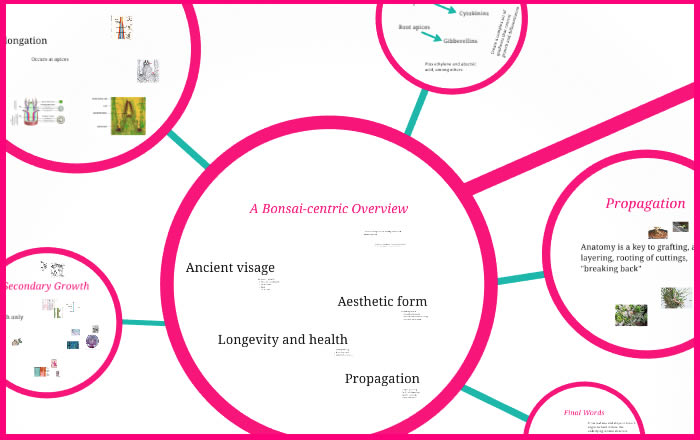Presentation by our resident botanist Karl Horak.
View On Prezi >
Plant Anatomy for Bonsai
What is Plant Anatomy?
The internal structure of plants
A Bonsai-centric Overview
Ancient visage
Secondary Growth
Girth only
Primary Growth
Elongation
Hormones
Shoot apices
Propagation
Anatomy is a key to grafting, air layering, rooting of cuttings, “breaking back”
Not to be confused with “Plant Morphology”
The external structure of plants
Usually studied by means of examining thin sections under a microscope
Concentrating here on woody dicots and gymnosperms
Aesthetic form
Longevity and health
Propagation
Secondary growth
Keiseiso (cambium)
Za & nebari
Bark
Jin & shari
Primary growth
Apical meristems
Phyllotaxy & leaf anatomy
Growth hormones
Transplanting
Root structure
Growth hormones
Tsugiki (grafting)
Toriki (air layering)
Sashiki (cuttings)
Fruits and seeds
And why should I care?
Root apices
Auxins
Gibberellins
Cytokinins
Occurs at apices
Intimately related to plant physiology
We’ll save leaf anatomy, photosynthesis, and the whole water balance question until later.
Plus ethylene and abscisic acid, among others
Create a complex set of gradients that control growth and differentiation
Final Words
Plant anatomy involves a lot of strange vocabulary that describes the strange goings-on inside of plants. In the end, understanding the internal structure of our trees makes us better able to produce the living works of art that are Bonsai. From leaf size and shape to branch angles to bark texture, the underlying cellular structure informs the trees that we work with.
